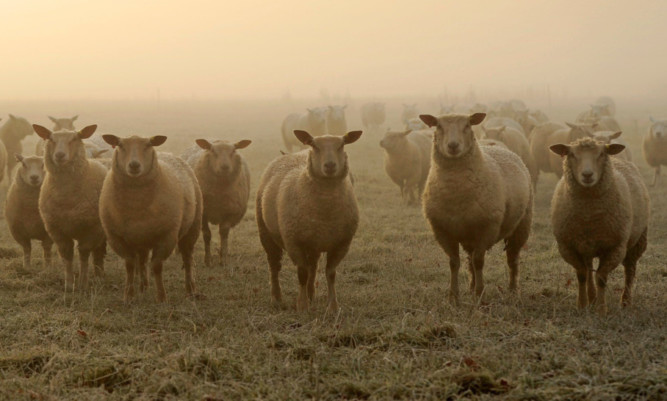Hogg prices began the New Year more strongly than is typical for the start of January, according to Stuart Ashworth, head of Economics Services with Quality Meat Scotland (QMS).
“Typically the first few weeks of the year is a period when the market rebalances itself after the turmoil of the festive period,” said Mr Ashworth.
“Consumers become more frugal with their regular food budget as they adjust to the eating and spending excesses of the holiday period. It is not uncommon to see cattle and hogg prices drift lower through January as the market adjusts.”
This year, however, hogg prices have been edging higher at auction markets and comparing favourably with 12 months ago.
What is equally pleasing for producers, he said, is that this price increase has occurred despite a higher volume of prime lambs and hoggs reaching the market.
From June to November UK prime lamb slaughterings accounted for 350,000 head, 5% more than in 2013, and auction throughputs last month continued to run ahead of last year for GB as a whole but were similar in Scotland.
“An equally striking feature of the current sheep meat market is the particularly firm price of cull ewes. The strength in the cull trade is a reflection of the reduced numbers of cull animals reaching abattoirs,” Mr Ashworth said.
In the period from June to the end of November cull ewe slaughterings across the UK have been 13% lower than last year.
The volume of ewes passing through auction markets in December continued to be lower than last year so, by historic standards, cull sheep are in tight supply. Mr Ashworth said this may also have helped demand for heavy lambs/hoggs, which have been selling well.
“There is, then, some underlying strength in the UK sheep-meat market.
“A contributory element here may well be that although the UK may be well supplied in sheep meat this is not the case on a wider European stage,” added Mr Ashworth.
“With the exception of Italy and Romania, all the major sheep-meat-producing countries of Europe, and most of the small producers as well, have seen stock numbers slide.
“Ireland, for example, has seen lamb slaughtering in the final quarter of 2014 run around 7% lower than 2013.”
During November, French lamb slaughterings fell below year-earlier levels, having run slightly higher earlier in the year.
Lamb consumption in France is still under pressure and UK exporters are struggling to maintain export volumes but they are holding on to volume better than Irish and New Zealand suppliers.
French statistics show that during October, GB deliveries of sheep meat were up a fraction, while New Zealand supplied 3% less and Ireland 8% less.
Typically, exports of sheep meat as a proportion of production are at their highest in the first quarter of the year and often reach their high point for the year in March.
“Over the past three years sheep-meat exports during the first quarter of the year have averaged 35% of production, while they often exceeded 40% of production in March,” said Mr Ashworth.
“Consequently the sheep sector will be paying great attention to the political turmoil in Greece and the reaction of the European Central Bank to this and also the wider challenges of the eurozone economy and its impact on exchange rates.
“These actions may have a greater impact on producer prices than the supply and demand balance of sheep meat on the wider European market in the short term,” he added.
